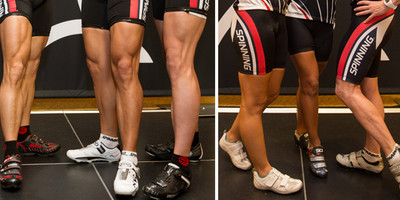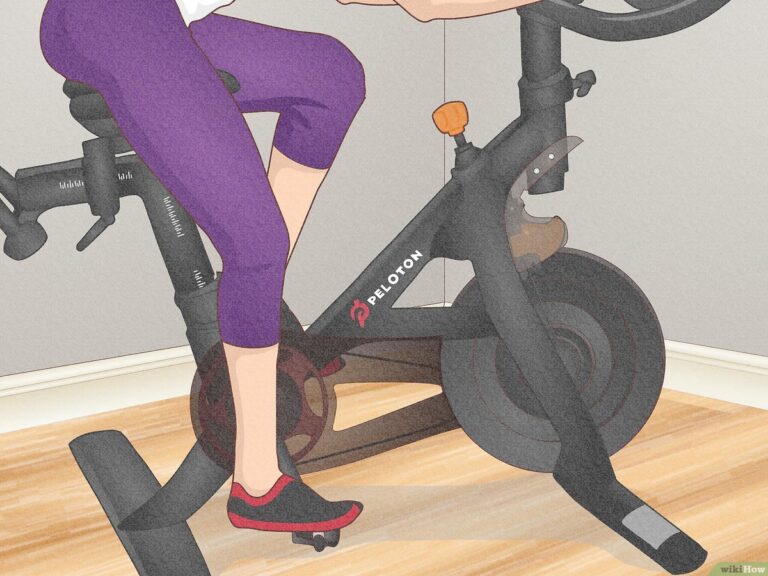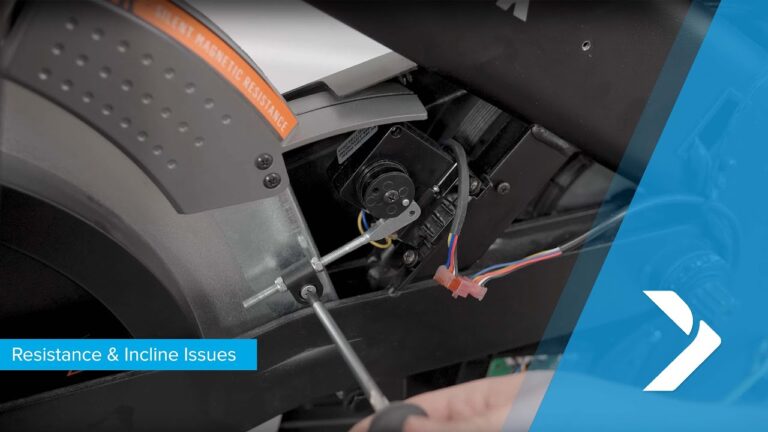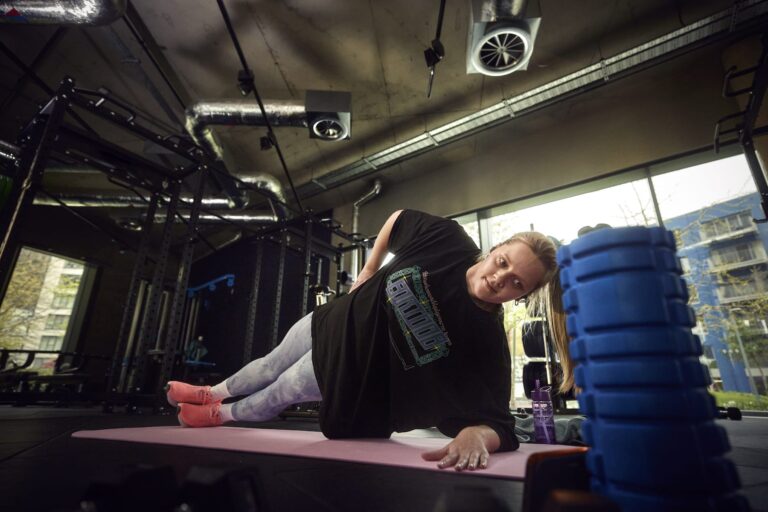Does Peloton Make Your Legs Bigger? Find Out the Truth!
Peloton cycling does not make your legs bigger. In fact, it can help reduce leg and thigh fat, resulting in a smaller muscle appearance.
Cycling is often recommended as a way to slim down your legs, rather than bulk them up.
The Effects Of Peloton On Leg Muscle Size
Understanding how Peloton workouts impact leg muscles
Peloton is a popular indoor cycling workout that has gained immense popularity in recent years. One of the main concerns for individuals considering Peloton workouts is whether it will make their legs bigger. To understand the effects of Peloton on leg muscle size, it is essential to delve into the science behind how these workouts impact leg muscles.
Analyzing the potential for muscle growth through Peloton
When it comes to muscle growth, Peloton workouts can play a significant role. While cycling primarily targets the lower body, including the quadriceps, hamstrings, calves, and glutes, the intensity and duration of the workout determine the potential for muscle growth. By engaging in high-intensity interval training (HIIT) workouts on the Peloton bike, individuals can stimulate muscle hypertrophy, leading to an increase in leg muscle size.
During a Peloton workout, the resistance levels can be adjusted to provide a challenging workout for the leg muscles. By increasing the resistance, cyclists can add more load to their muscles, promoting strength and growth. Additionally, the instructor-led classes offer a variety of movements, such as standing climbs, seated sprints, and hill climbs, which engage different leg muscles at varying intensities.
It is important to note that the extent of muscle growth will vary from person to person, depending on factors such as genetics, nutrition, and overall fitness levels. However, consistent and dedicated Peloton workouts can contribute to lean muscle development in the legs over time.
Understanding the importance of nutrition and recovery
While Peloton workouts can stimulate muscle growth, it is crucial to complement these workouts with proper nutrition and adequate recovery. To support muscle growth, individuals should consume a balanced diet that includes sufficient protein, which is essential for muscle repair and development. Additionally, allowing for rest and recovery days between intense workouts enables the muscles to adapt and grow.
Furthermore, incorporating strength training exercises, both on and off the bike, can be beneficial for overall leg muscle development. These exercises can include lunges, squats, and leg presses, which target different muscle groups and add additional resistance to the workout regimen.
In conclusion, Peloton workouts have the potential to make your legs bigger by stimulating muscle growth in the lower body. By incorporating high-intensity interval training, adjusting resistance levels, and supporting workouts with proper nutrition and recovery, individuals can optimize their leg muscle gains through Peloton.
The Relationship Between Peloton And Leg Muscle Development
Exploring the connection between cycling and leg muscle size
Cycling is a highly effective exercise that can contribute to leg muscle development. When you engage in regular Peloton workouts, you are primarily working the muscles in your legs, including your quadriceps, hamstrings, calves, and glutes. The repetitive motion of cycling helps to strengthen and tone these muscles, resulting in improved muscle definition and overall leg shape.
By consistently pedaling against resistance, you are challenging your leg muscles and encouraging them to grow. This resistance can be adjusted on your Peloton bike, allowing you to gradually increase the intensity of your workouts as your muscles become stronger. The combination of cardiovascular exercise and resistance training in cycling makes it an ideal activity for leg muscle development.
Addressing common misconceptions about Peloton and leg growth
There are often misconceptions that cycling, particularly on a Peloton bike, will make your legs bigger in a bulky way. However, it’s important to understand that building significant muscle mass requires more than just cycling alone. Factors such as genetics, diet, and overall training program play a significant role in muscle growth.
While cycling on a Peloton bike can contribute to leg muscle development, it is unlikely to cause your legs to become excessively bulky. Instead, consistent Peloton workouts can help to shape and sculpt your legs, resulting in a more toned and defined appearance.
Examining the role of resistance in Peloton workouts
The resistance feature on a Peloton bike is a key component that allows you to adjust the intensity of your workouts. By increasing the resistance, you can challenge your leg muscles even more, leading to greater muscle activation and potential growth.
It’s important to note that increasing the resistance alone will not automatically result in bigger leg muscles. Muscle growth is a complex process that requires a combination of resistance training, proper nutrition, and adequate recovery. When combined with a well-rounded workout routine and a balanced diet, the resistance feature on your Peloton bike can contribute to leg muscle development.
In conclusion, Peloton workouts can positively impact leg muscle development. By engaging in regular cycling exercises with varying resistance levels, you can strengthen and tone your leg muscles, resulting in improved muscle definition and overall leg shape. While cycling alone may not lead to significant muscle growth, it can contribute to a more toned and sculpted appearance when combined with other factors such as genetics, diet, and overall training program.
Factors That Determine Leg Muscle Size With Peloton
When it comes to building leg muscle size with Peloton, several factors come into play. Understanding these factors is key to achieving your desired results. In this section, we will explore the role of intensity and frequency, the impact of nutrition, and the importance of rest and recovery in leg muscle development.
Understanding the role of intensity and frequency in muscle growth
The intensity and frequency of your Peloton workouts play a crucial role in determining leg muscle size. When you push yourself to higher intensity levels during your rides, you activate more muscle fibers and stimulate muscle growth. Higher intensity workouts help to recruit both slow-twitch and fast-twitch muscle fibers, resulting in greater overall muscle development.
Similarly, the frequency of your workouts also affects muscle growth. Consistently engaging in Peloton rides allows for regular muscle stimulus, promoting muscle hypertrophy over time. It is recommended to incorporate a mix of high-intensity rides and recovery rides into your routine to maximize muscle growth potential.
Exploring the impact of nutrition on leg muscle development
Proper nutrition is vital for supporting leg muscle development with Peloton. Your body requires an adequate supply of nutrients, especially protein, to repair and build muscle tissue. Consuming a balanced diet that includes lean protein sources, complex carbohydrates, and healthy fats can provide the necessary fuel for muscle growth.
In addition to macronutrients, hydration is also essential for muscle development. Drinking enough water helps transport nutrients to your muscles and aids in their recovery. Staying hydrated during and after your Peloton workouts can optimize the muscle-building process.
Discussing the importance of rest and recovery for leg growth
Rest and recovery are often overlooked but crucial components of leg muscle growth with Peloton. Your muscles need time to repair and adapt to the stress placed on them during workouts. Without adequate rest, overtraining can occur, leading to muscle fatigue and decreased performance.
Allowing for proper rest days between intense workouts is essential to prevent muscle breakdown and promote muscle growth. During rest days, your body repairs damaged muscle fibers and builds new ones, resulting in increased leg muscle size over time.
In addition to rest days, incorporating active recovery activities such as stretching, foam rolling, and lower-intensity workouts can aid in muscle recovery and prevent muscle imbalances.
In conclusion, leg muscle size with Peloton is influenced by the intensity and frequency of your workouts, proper nutrition to support muscle growth, and sufficient rest and recovery. By understanding and optimizing these factors, you can achieve your desired leg muscle development with the help of Peloton.
Does Peloton Result In Bulky Legs?
Dispelling the myth of bulky legs with Peloton
There is a common misconception that Peloton workouts lead to bulky legs. However, this is simply a myth and not supported by scientific evidence. Peloton cycling does not make your legs and thighs bigger, but rather helps to shed leg and thigh fats, resulting in a smaller muscle outlook.
Explaining why Peloton does not typically lead to significant muscle mass
Unlike traditional weightlifting or resistance training exercises that specifically target muscle growth, Peloton workouts primarily focus on cardiovascular endurance and overall fitness. While cycling on a Peloton bike provides a challenging and effective workout, it does not typically lead to significant muscle mass gain.
The resistance levels on a Peloton bike can be adjusted to provide more or less intensity, but even at higher resistance levels, the emphasis is still on cardiovascular conditioning rather than muscle hypertrophy. This means that while you may experience improved strength and endurance in your legs, you are unlikely to see a significant increase in muscle size.
It’s important to remember that muscle mass growth is a result of specific targeted exercises, adequate calorie intake, and progressive overload. Peloton workouts alone are not designed to induce the type of muscle hypertrophy typically associated with bulky legs.
In fact, many Peloton enthusiasts report that their legs become more toned and defined with consistent use of the Peloton bike. This is due to the combination of cardio exercise, which helps to reduce overall body fat, and the engagement of leg muscles during the cycling motion, which leads to improved muscle tone and definition.
Furthermore, the notion of “bulky” legs is subjective and varies from person to person. What one individual considers bulky, another may view as strong and sculpted. It’s important to focus on individual goals and preferences when it comes to body composition.
In conclusion, Peloton workouts do not typically result in bulky legs. Instead, they provide a challenging cardiovascular workout that can help improve leg strength, endurance, and muscle tone.+
Peloton As A Tool For Leg Muscle Definition
<h3>Highlighting the potential for increased leg muscle definition with Peloton</h3> |
When it comes to achieving toned and defined leg muscles, Peloton can be an incredibly effective tool. This popular home fitness equipment offers a range of challenging workouts that target various muscle groups, including the legs. By incorporating Peloton into your fitness routine, you can work towards improving leg muscle definition and achieving your desired aesthetic.
<h3>Discussing how Peloton can help shape and tone leg muscles</h3> |
Peloton workouts involve a combination of high-intensity cycling, resistance training, and interval training, all of which are beneficial for shaping and toning leg muscles. Here’s how Peloton helps in achieving leg muscle definition:
- Variety of workouts: Peloton offers a wide range of workout classes that specifically target the legs, such as hill climbs, sprints, and resistance-based rides. These workouts engage the major muscle groups in the legs, including the quadriceps, hamstrings, calves, and glutes, helping to strengthen and define these areas.
- Resistance training: Peloton workouts often incorporate resistance training, either through resistance settings on the bike or off-bike workouts. Resistance training is known for its ability to build lean muscle mass, resulting in more defined muscles. By increasing resistance during your rides or adding strength training classes to your routine, you can effectively shape and tone your leg muscles.
- Interval training: High-intensity interval training (HIIT) is a key component of many Peloton workouts. HIIT involves short bursts of intense exercise followed by brief recovery periods. This type of training has been shown to increase muscle definition and burn fat, helping to sculpt the legs.
In addition to the specific features of the Peloton workouts, consistent training and progressive overload are essential for achieving leg muscle definition. By gradually increasing the intensity, duration, and resistance of your Peloton workouts over time, you can continue to challenge your leg muscles and promote further growth and definition.
In conclusion, Peloton can be a powerful tool for leg muscle definition. With its diverse range of workouts and emphasis on resistance and interval training, Peloton offers an effective way to shape and tone your leg muscles. By incorporating Peloton into your fitness routine and following a progressive overload approach, you can work towards achieving the strong, defined legs you desire.
Tips For Optimizing Leg Muscle Development With Peloton
When it comes to leg muscle development, Peloton can be a valuable tool in your fitness arsenal. With its immersive cycling and strength training classes, Peloton offers a well-rounded approach to leg workouts that can help you build strength and tone your muscles. In this article, we will explore some essential tips for optimizing leg muscle development with Peloton, including incorporating resistance training exercises, balancing cardio and strength workouts, and exploring specific Peloton programs and classes.
Incorporating resistance training exercises to enhance leg muscle growth
One of the best ways to optimize leg muscle development with Peloton is to incorporate resistance training exercises into your workouts. These exercises help target specific muscle groups and promote muscle growth. Here are some resistance training exercises you can incorporate into your Peloton routine:
- Squats: Squats are a great compound exercise that targets your quadriceps, hamstrings, and glutes. They can be performed with or without weights for added intensity.
- Lunges: Lunges help strengthen your quadriceps, hamstrings, and glutes. You can do them in various variations, including forward lunges, reverse lunges, and lateral lunges.
- Calf raises: Calf raises help target your calf muscles and can be done using your body weight, dumbbells, or resistance bands.
Balancing cardio and strength workouts for overall leg development
Achieving optimal leg muscle development requires a balanced approach between cardio and strength workouts. While cycling classes on Peloton provide an excellent cardio workout, incorporating strength training exercises is crucial for overall leg development. Here’s how you can strike a balance between the two:
- Alternate between cycling classes and strength-focused classes: Mix up your Peloton workouts by incorporating both cycling classes and strength-focused classes. This way, you can reap the cardiovascular benefits of cycling while also targeting your leg muscles with dedicated strength exercises.
- Add strength intervals to your cycling workouts: During your cycling classes, add intervals of resistance and speed that simulate hill climbs. This will engage your leg muscles and provide an extra challenge.
Exploring specific Peloton programs and classes for targeted leg work
Peloton offers a wide range of programs and classes that specifically target leg muscle development. Here are a few examples:
| Program/Class | Description |
|---|---|
| Power Zone Training | A program that focuses on improving power and endurance. It includes challenging rides that will help build leg strength. |
| Legs & Glutes classes | These classes specifically target your leg and glute muscles, incorporating a mix of cycling and strength exercises. |
| Hill Climb classes | These classes simulate hill climbs and provide a great workout for your leg muscles, helping you build strength and stamina. |
By exploring these specific programs and classes on Peloton, you can tailor your workouts to focus on leg muscle development and maximize your results.
In conclusion, optimizing leg muscle development with Peloton requires a combination of resistance training exercises, a balanced mix of cardio and strength workouts, and exploring targeted programs and classes. By incorporating these tips into your Peloton routine, you can enhance your leg muscle growth and achieve your fitness goals.

Credit: www.self.com
Frequently Asked Questions For Does Peloton Make Your Legs Bigger
Will Spinning Make My Legs Bigger?
Spinning, or indoor cycling, will not make your legs bigger. In fact, it can help decrease fat in your legs and make them smaller and more toned. Spinning is an aerobic activity that improves leg muscles without causing bulkiness. So, if you’re looking to slim down your legs, spinning can be beneficial along with proper nutrition.
Does Cycling Make Your Legs Skinnier Or Bigger?
Cycling does not make your legs bigger. It can actually help to slim down your legs by reducing fat and shaping your leg muscles. Regular cycling improves leg muscles like any other aerobic activity.
Will Spinning Slim My Legs?
Spinning will not make your legs bigger, but it can help slim them down by reducing excess fat and shaping your leg muscles. Coupled with proper nutrition and controlled portions, spinning can lead to smaller, more defined legs.
Do You Gain Muscle From Peloton?
Cycling on Peloton can help build muscle in your legs but won’t necessarily make them bigger. Regular cycling can decrease fat in your legs and help shape your leg muscles, resulting in a more defined appearance. Coupled with proper nutrition, Peloton workouts can aid in losing fat and toning your legs.
Conclusion
After careful research and analysis, it can be confidently stated that Peloton cycling does not make your legs bigger. In fact, regular cycling on a Peloton bike is more likely to help you shed leg and thigh fat, resulting in a slimmer muscle outlook.
While cycling does improve leg muscles and shape them, it does not bulk them up unless paired with significant strength training. So, if your goal is to have toned and lean legs, Peloton workouts can certainly help you achieve that.
Remember to combine your cycling routine with proper nutrition and controlled portions for optimal results.







